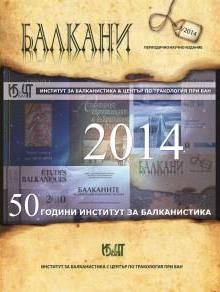Османските Балкани в епохата на ранното ново време – зона на конфликт, на контакт или на съжителство?
The Balkans under Ottoman Rule in the Early New-Time Age: an Area of Conflicts, Contacts or Coexistence?
Author(s): Rossitsa GradevaSubject(s): History
Published by: Институт за балканистика с Център по тракология - Българска академия на науките
Summary/Abstract: The Balkans have often been defined in mass media, history works or popular writing, as a bridge between the East and the West, between Islam and Christianity, between civilisations, which until the last decades of the 20th century met and cohabited on the peninsula without significant conflicts. The geographic location and relief of the Balkan Peninsula, its long history as part of the European ancient and medieval world, are among the main factors premising the diversity of the region considered one of its major characteristics. On the eve of the Ottoman conquest of the Peninsula the area represents a mosaic of ethnic, linguistic and confessional communions. The Ottoman rule leads to the emergence of new linguistic and religious groups, as the Empire presupposes a still more variegated population mix. The ethnical borders in the Balkans represent zones rather than simple borderlines. Within the above-mentioned zones two or more ethnic and/or confessional groups usually share a common ground, and, further among them, there are also other, less numerous, groups dispersed. The co-existence under the Ottoman rule is not free of tension. One of the main results of this ethnical and confessional diversity is the amassing of experience in living with people different in their language, culture, religion.
Journal: БАЛКАНИ
- Issue Year: 3/2014
- Issue No: 3
- Page Range: 23-38
- Page Count: 16
- Language: Bulgarian

